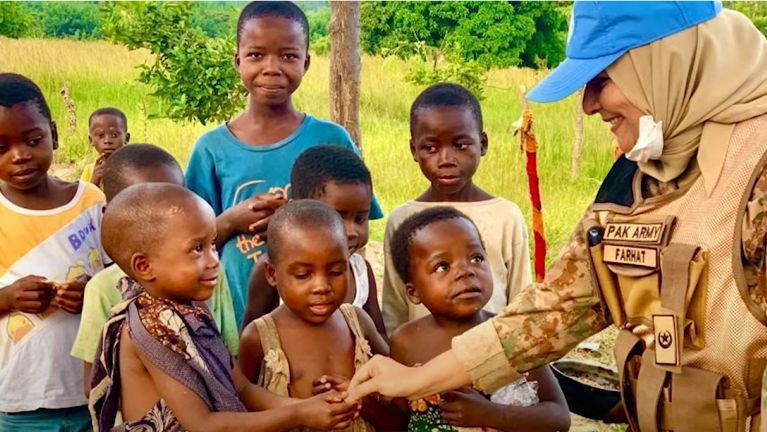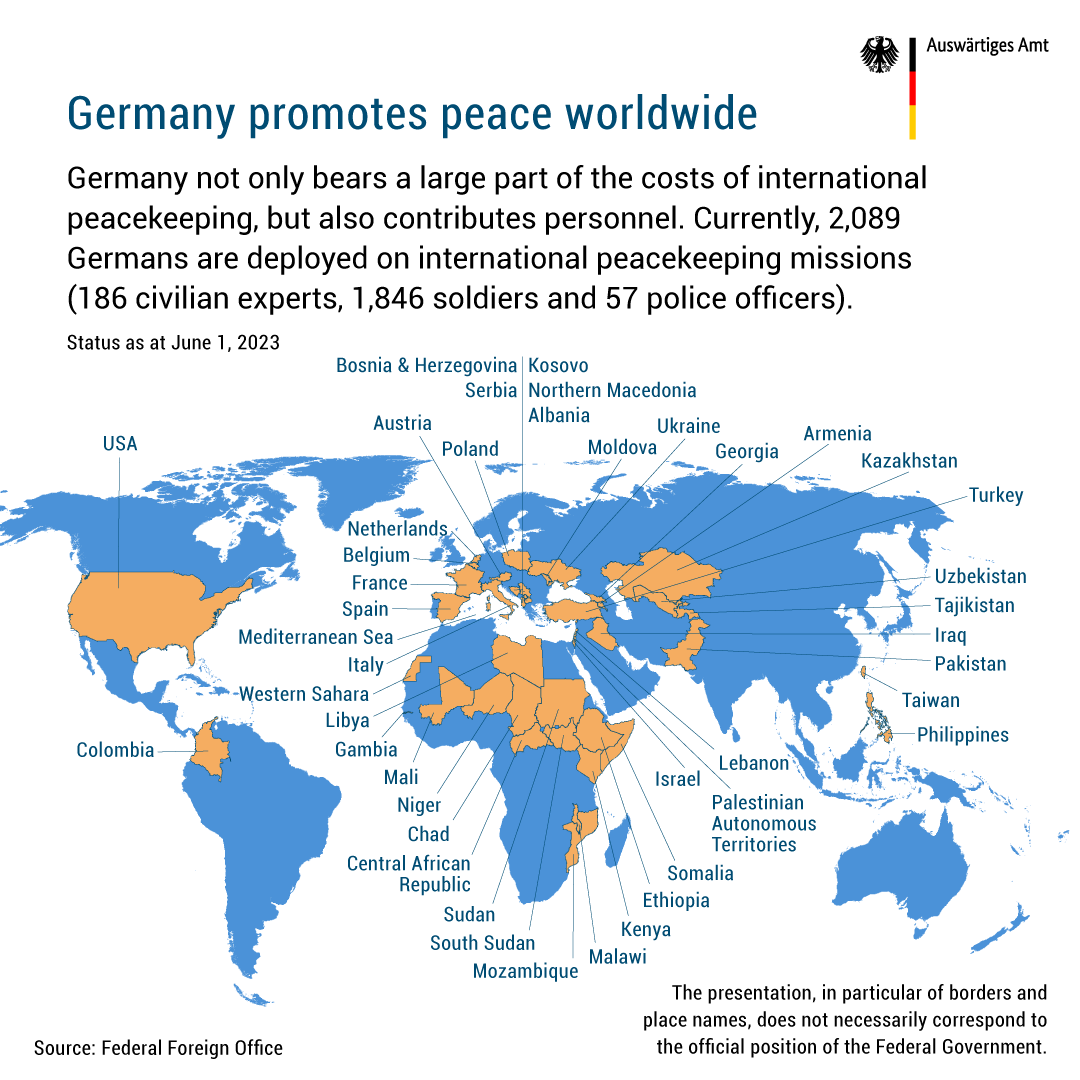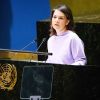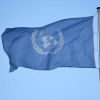Peacekeeping in transition
UN peace missions take on much more than military tasks: what they do and how Germany is involved.
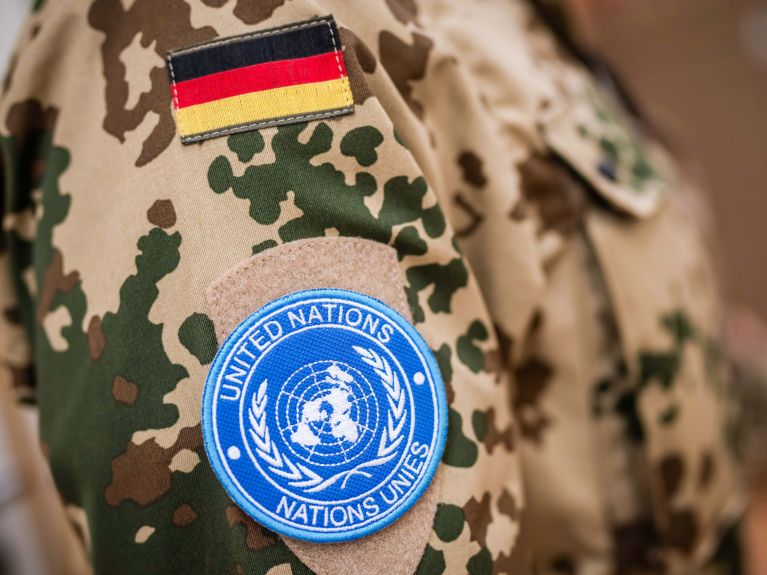
What is peacekeeping?
Peace missions help resolve conflicts in nations and restore peace. Such missions are usually initiated by the Security Council of the United Nations: a mandate is issued for them and they are usually authorised by the host country. They can be organised and commanded by the UN itself or by organisations such as NATO, the EU or the African Union. Although peace missions were not originally included in the UN Charter, they have developed over the years to become an important instrument for peace-building and peacekeeping. Over the past 75 years, there have been 71 UN peacekeeping missions involving two million men and women from 125 countries.
Dieses YouTube-Video kann in einem neuen Tab abgespielt werden
YouTube öffnenThird party content
We use YouTube to embed content that may collect data about your activity. Please review the details and accept the service to see this content.
Open consent formWhat exactly do peacekeepers do?
Their tasks are as diverse as the conflicts they seek to resolve. Nevertheless, most of the missions undertaken to date are comparable in terms of their profile. They almost always involve some form of security or protection, which is why soldiers and police officers are usually part of a mission. However, they may also involve professionals in the areas of engineering, election observation or conflict mediation. The mission personnel come from the UN member states, which send them voluntarily. Peacekeepers must be trained in their field and have professional skills.
How have the requirements for UN peace missions changed over time?
The challenges and crises in the world are becoming increasingly complex. Accordingly, the range of tasks pursued by peace missions has expanded considerably. Today, they are mostly “multidimensional”: in addition to purely military activities – such as securing or observing borders – they also involve wide-ranging civilian tasks. Depending on the mandate, they may involve mediation between conflict parties, support for security sector reforms, monitoring of elections, help in building rule-of-law institutions or protection of human rights. The military, police and civilian forces work hand in hand on such missions. In addition, there are so-called “Special Political Missions” that have no military component at all, but focus exclusively on civilian forms of conflict handling. There are currently twelve classic UN peacekeeping missions in progress and about three times as many “Special Political Missions”.
From which countries do the peacekeepers mainly come?
Traditionally, military and police personnel for UN peace operations tend to come mainly from developing and emerging countries. Countries such as Bangladesh, Nepal, India, Rwanda and Pakistan top the list. The foremost industrialised country in this ranking is Italy, which is in 24th place. Germany ranks 33rd.
How is Germany involved in international peace missions?
Germany currently provides soldiers, police officers and civilian personnel for four UN peace missions and three “Special Political Missions”. As the fourth largest contributor – after the USA, China and Japan – Germany also makes a significant contribution to the budget of the peace missions. In addition, the Federal Republic participates in missions mandated by the UN but carried out by other organisations, such as NATO, the EU or the OSCE, for example in Armenia.
Where are German soldiers currently deployed and what is their task?
German soldiers are currently stationed in Lebanon (UNIFIL), South Sudan (UNMISS), Mali (MINUSMA) and the Western Sahara in connection with UN operations, with by far the largest military contingent of more than 1,000 soldiers deployed in Mali. In May 2023, the Bundestag extended this mandate for the last time for another year. Difficult political circumstances and a regime that is no longer cooperating sufficiently have led the German government to withdraw from the mission. The contingent in UNIFIL is considerably smaller, with an average of up to 300 people, but Germany is in charge of the naval unit. Currently, 14 Germans are involved in the mission in South Sudan and four military observers in Western Sahara. In the three purely political missions in Somalia, Kosovo and Sudan, Germany is represented with up to five civilian delegates each.
How can innovative technologies make peace missions more effective?
Modern tools can support peace missions in their work. This applies to data that refine situational assessment, for example, such as in the programme Comprehensive Planning and Performance Assessment System (CPAS). This enables the situation in the country to be assessed against the actions taken by a peacekeeping force, thereby evaluating the latter’s performance. Reconnaissance drones can also complement situation awareness and enable pinpoint activities to be undertaken by a UN mission. UN Secretary-General António Guterres has initiated a reform agenda entitled “Action for Peacekeeping”, one point of which is digitalisation.
How effective are peace missions?
According to the UN, it has successfully ended dozens of conflicts in the past 75 years, such as those in Cambodia, El Salvador, Guatemala, Mozambique and Namibia. Other UN mission have had a de-escalating effect, such as in Liberia, Haiti and Sierra Leone. But there have also been cases where it was not possible to contain or prevent violence and suffering. This applies to events in Somalia, Rwanda and the former Yugoslavia in the 1990s, for example. As such, the overall balance is mixed. However, there is no doubt that peacekeeping forces are comparatively cost-efficient: they currently account for only 0.5 per cent of global military spending – so from this point of view they achieve a great deal.
